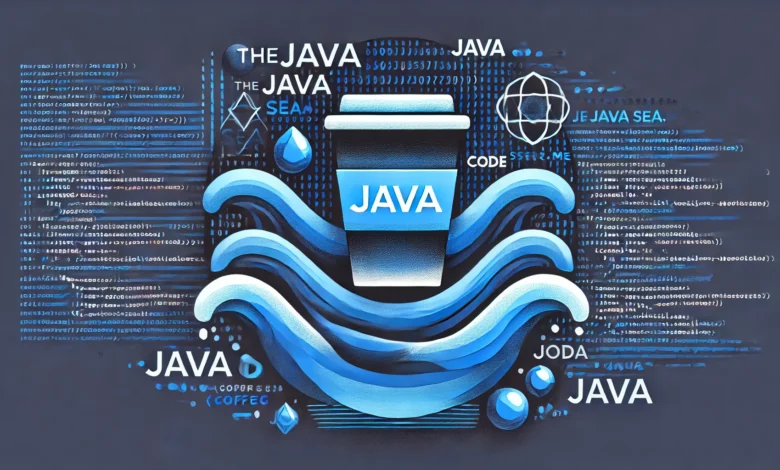Exploring thejavasea.me Leaks AIO-TLP287: What You Need to Know

Introduction to thejavasea.me leaks aio-tlp287
Thejavasea.me is an online platform that has garnered attention for its role in sharing various forms of content, including sensitive data. Among the discussions surrounding this platform, the leaks pertaining to AIO-TLP287 have emerged as a particularly noteworthy topic. Understanding the context of these leaks is essential for comprehending their broader implications for users and the community at large.
AIO-TLP287 refers to a specific dataset that, when leaked, raised significant concerns regarding user privacy and information security. The leaks from thejavasea.me have resulted in a considerable amount of sensitive information being exposed, potentially affecting numerous individuals and organizations. This situation underscores the importance of data protection and highlights the risks associated with the distribution of confidential materials online.
In a landscape where digital privacy is continually threatened, AIO-TLP287 stands as a stark example of the consequences stemming from inadequate data management and protection protocols. The ongoing discourse surrounding these leaks serves as a reminder of the vulnerabilities that pervade online interactions and the critical need for vigilance in maintaining data integrity.
Details of the AIO-TLP287 Leak
The AIO-TLP287 leak has raised significant concerns within the cybersecurity community due to the breadth and sensitivity of the information compromised. This particular leak, associated with thejavasea.me, involved the exposure of personal identifiable information (PII) such as names, email addresses, and potentially financial data. Reports suggest that the leak originated from a vulnerability in the underlying database system employed by thejavasea.me, which was exploited by malicious actors to gain unauthorized access to sensitive records. The timeline of events indicates that the breach may have occurred several months prior to its public disclosure, leading to an extended period during which user data remained at risk.
The technical intricacies of the AIO-TLP287 leak reveal a sophisticated breach technique, highlighting the necessity for enhanced security measures in data storage frameworks. Cybersecurity experts emphasize that the exploitation of weak encryption protocols played a vital role in facilitating this breach. In particular, the lack of multi-factor authentication likely allowed attackers to bypass critical security layers, resulting in unauthorized access to a significant volume of user data. Moreover, the data gathered during this incident can potentially be leveraged for identity theft, phishing scams, and other malicious activities, further complicating the implications of the leak for affected individuals.
The ramifications of the AIO-TLP287 leak are profound, with many users now facing a heightened risk of cyber threats. Cybersecurity analysts recommend that users affected by the leak take immediate steps to secure their personal information, including changing passwords and monitoring bank accounts for unauthorized transactions. Additionally, it’s crucial for organizations to bolster security protocols to prevent such compromises in the future. As we continue to explore the ongoing implications of thejavasea.me leaks aio-tlp287, the industry must address the vulnerabilities that led to this incident, ensuring that robust protective measures are put in place.
Impact of the AIO-TLP287 Leak on Users and the Community
The leaks associated with thejavasea.me, specifically the AIO-TLP287 incident, have raised significant concerns regarding user privacy and security. When information is leaked, it can expose a wide array of personal data, ranging from usernames and passwords to sensitive financial information. Users affected by the AIO-TLP287 leaks may find themselves vulnerable to identity theft, financial fraud, and various forms of cyber harassment. Such risks necessitate immediate action from users to mitigate potential harm.
In the wake of the AIO-TLP287 leak, it is crucial for users to take proactive measures to safeguard their online presence. First and foremost, changing passwords frequently and employing strong, unique passwords for different accounts is imperative. Utilizing password managers can assist in generating and storing these passwords securely. Additionally, enabling two-factor authentication (2FA) wherever possible can significantly fortify accounts against unauthorized access. Users should also remain vigilant by monitoring their financial statements for any suspicious activity.
The repercussions of the AIO-TLP287 leak extend beyond individual users, affecting the broader community as well. As trust in platforms like thejavasea.me wanes, users may reconsider their engagement, leading to a decline in user participation. This can impact the community’s infrastructure, as fewer users often result in diminished resources and support systems. Furthermore, responses from thejavasea.me regarding this leak, whether prompt or delayed, play a pivotal role in shaping community sentiment and trust.

Cybersecurity professionals recommend that users remain informed about potential threats related to the AIO-TLP287 incident and follow best practices for online safety. Regularly updating software and remaining cautious of phishing attempts are essential steps in navigating the aftermath of such leaks. Ultimately, while thejavasea.me leaks AIO-TLP287 represent a significant challenge, addressing the consequences with diligence can help mitigate risks for users and the community. In conclusion, understanding and responding to this situation is vital for collective security.
Moving Forward: Preventing Future Leaks and Best Practices
In the wake of thejavasea.me leaks aio-tlp287, it is imperative for both users and platforms to adopt robust strategies to prevent future data breaches. The increasing frequency and severity of such incidents highlight the urgent need for heightened awareness and proactive engagement in data protection practices.
One of the foundational steps to safeguarding sensitive information involves educating users about the importance of maintaining strong passwords and using two-factor authentication wherever possible. By ensuring that passwords are not only complex but also unique for different platforms, users can significantly reduce the risk of unauthorized access. Furthermore, it is crucial for users to remain vigilant against phishing attacks, as these often serve as gateways for data leaks. Regularly training individuals on recognizing potential threats can foster a culture of security.
On the platform side, implementing stringent data security measures is vital. This includes conducting regular security audits, ensuring software and systems are updated promptly, and leveraging encryption technologies to protect sensitive data. Platforms should also establish incident response plans to swiftly address any suspected breaches, ensuring minimal impact on users. Transparency in communicating any potential threats to users can enhance trust and collaboration in addressing safety concerns.
Moreover, incorporating best practices such as limiting data collection to only what is necessary, regularly reviewing permissions for third-party applications, and encouraging users to utilize privacy settings can greatly reduce data exposure. Additionally, platforms should continuously assess their security policies, adapting them in response to the evolving landscape of cyber threats.
By embracing these proactive strategies, both users and platforms can contribute to a more secure online environment, thereby minimizing the risk of incidents akin to thejavasea.me leaks aio-tlp287. With concerted efforts, it is possible to create a robust defense against future vulnerabilities.




